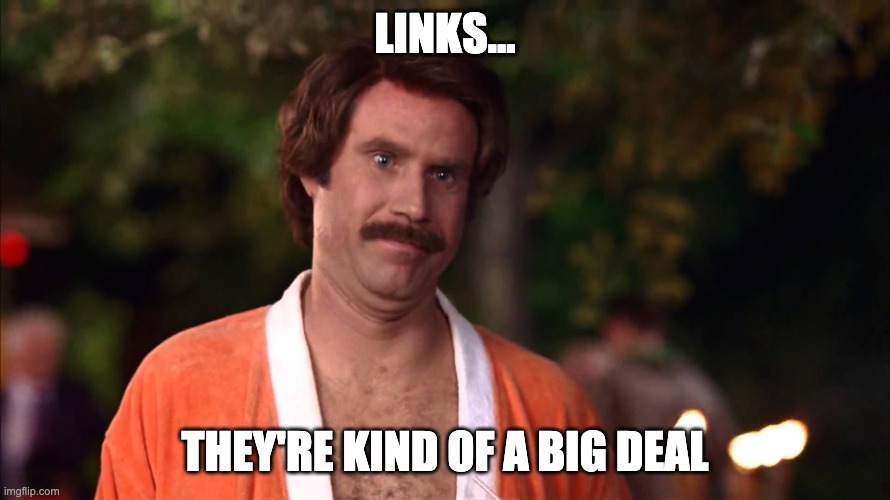You know what they say, keep your friends close and your enemies closer. Well, believe it or not, the same rule applies to your SEO strategy! And this is where SEO link gap analysis comes in. This strategy allows you to use your competitors as a way of finding great link opportunities to play catch up with them in the SERPs.
But why go through all this effort of essentially stalking your competitors?
Because to this day, the right kind of backlinks are like gold when it comes to SEO and ranking higher on the SERPs. But gaining these valuable backlinks takes a solid strategy.
That’s why we’ve put together this guide. Below, we’re going to take an in-depth look at conducting a link gap analysis and how you can exploit your competitors content for your own benefit. To do this, we’re going to address the following:
• What is a link gap analysis?
• What are the benefits of a backlink analysis?
• The different tools you can use
• How to conduct a link gap analysis
• How your analysis can impact your content strategy
• How to use your findings for the best results
So, if you’re hoping to take your SEO strategy to the next level, read on to find out how a backlink gap analysis could be the perfect way to do this.
What is an SEO link gap analysis?
If you’re familiar with competitor keyword analysis, you might be aware of the process and this will be fairly similar. But if you’re not, that doesn’t matter, we’re going to start by taking a look at what a link gap analysis actually is.
In a nutshell, this process is the analysis and scouring of your competitor’s websites and content to identify any links they have earned that you might also be able to obtain.
As we said, links are important for ranking well on SERPs. In fact, it’s pretty difficult for you to rank well at all if you don’t have any backlinks, let alone good-quality links.
But good quality links can be hard to secure.
So, by using intelligence and data analysis to run a backlink analysis, you can find websites that have already linked to your competitors and therefore might be willing to do the same for your site.
The fact that they have linked to content that is similar to yours means it is obviously of interest to them, therefore this can be much easier to win. Plus, if you can show them that your content is even better, they’ll be more likely to link to you over your key competitors.
This can help you to earn more quality links now and in the future.
What are the key benefits of a backlink analysis?
As well as being able to find easy wins for backlinks, there are a number of other key benefits to running a link gap analysis. If you’re still debating whether an analysis is right for your business, here are three other benefits to take into consideration:
• You’ll find great new links that can help you to unlock traffic and boost your rankings
• Another more obvious benefit is that analysis helps you to find highly relevant pages and websites to link to and this doesn’t have to be a one-off. If they find your content useful they might link to you several more times in the future
• Finally, running a competitor analysis like this highlights any gaps in your current link building strategy and can help you to plan a better strategy for the future
Do you want to know what else is great about a link gap analysis?
There are plenty of tools and service providers out there that you can use to help you do this and we’re going to look at some examples of these in more detail in the next section.
The different tools you can use for your link analysis
When it comes to finding the right tool for running your link gap analysis, there are plenty of options out there. And most of these work in a similar way.
By scouring your competitor websites or provided links, they’ll create a table or graph depicting the comparison between different competitors’ backlink profiles. You can select different time frames to see how many links your competitors are achieving too.
That being said, they may all have some different functionalities and features and some are better than others. Here are some of the better-known SEO link analysis tools that you might have heard of or used before:
• SEMrush
• Ahrefs
• Majestic
• Moz Link Explorer
• Screaming Frog
• SpyFu
As we said, many of these work in a similar way and can provide you with a list of backlinks that your competitors have secured recently.
You can also begin the analysis manually and conduct some of the early research yourself. Below, we’ll look in more detail at how to conduct a link gap analysis from beginning to end.
How to conduct a link gap analysis
Whether you’re doing this yourself or working with an SEO service provider, there are several things that need to happen during a link gap analysis.
This requires the use of your chosen tools to make the process quicker and easier and to give you some real insights into your competitors link building strategy. In order to conduct an effective link gap analysis you need to:
1. Identify your competitors
The first thing you need to do is to conduct a search to determine who your key competitors are. This is pretty straight forward, you can run an internet search for the goods or services you offer and see which companies come up.
You should then gather the top 10 resources that come up on the results page and put these into a spreadsheet. You now have a list of your top-performing competitors. Hopefully, you’ll already be familiar with a few of these anyway!
You can also use SEO tools such as Ahrefs or SEMrush to help you find competing domains if you’re unsure about running your own manual search.
2. Check out your competitors
Next, go through and manually check each competitor’s webpage to ensure they do specialise in your niche and to get a better understanding of what scale they operate on.
Once you’ve done this you can use your tools to find all of the backlinks and referring domains that these competing webpages possess. Most tools will pull together a list of referring URLs and give you the option to export all of these into a spreadsheet.
Then, in your spreadsheet, you can begin to rank your 10 competitors based on their domain authority and the number of backlinks they have.
At this point, you might also wish to set up weekly alerts that report on any new backlinks your competing URL has acquired. This can help you to stay ahead of the game and target new links quickly.
Many platforms will offer the ability to set up these alerts but it pays to look out for this functionality in the early stages when choosing which tool is best for you.
3. Run a content audit
Now you have a list of your competitor’s backlinks and referrals, the third step is to run a content audit. Go through the URLs you have in your backlink spreadsheet and look at what types of websites are linking to them.
You can use your tools to create a backlink profile that pulls out all the highest trusted and linked-to pages. This will give you a better idea of your competitor’s highest authoritative backlinks. These can be some of the first ones you choose to target with your own content as they might yield the best results.
At this point stage, armed with a list of backlinks, you can begin to get the next stage of your SEO strategy in place – using your findings to win your website new and better quality backlinks!
Note: You can also use your backlink analysis to influence your content strategy. So before we look at how you can make the most of your backlink audit, let’s take a quick look at how this can positively impact your content marketing strategy to.
Let your link gap analysis influence your content
When running a backlink audit you can also use your chosen platform to sort your competitor’s content based not only on their backlinks but their total shares as well. Many tools have a function that allows you to enter a URL and see how many shares it’s acquired on social media platforms.
This can be a great way to find out what type of content your target audience is already engaging with the most. Then, in the future, you can use these insights to determine the type of content you should be writing and sharing with your audience.
Not only this but it’s likely that if your competitor is getting lots of shares and engagement on social media for a particular piece of content, they probably outrank you for the keywords in that piece. As such, this can be a useful tool in your keyword research and determining which keywords you need to work harder at targeting in the future.
So as you can see, your gap analysis can have a number of other benefits, including positively influencing your content strategy in the future.
How to use your link gap analysis findings for the best results
Now, returning to your backlink gap analysis, you need to make sure you’re not just conducting an audit but that you’re putting the findings to good use. After all, the overall aim is to secure yourself some great backlinks!
As such, the final stage is to begin your outreach process.
To do this, use your list of quality competitor backlinks to go through and start reaching out to the publications and enquiring about links or guest content.
If you already have a piece of content you think is relevant to them, you might wish to start by seeing if they want to link to this. Just try not to be too pushy or ‘salesy’.
Alternatively, if you feel you could create an informative guest post that would speak to their audience whilst earning you a solid link, then take this approach instead. Just be sure to put together a short pitch that tells them why this article would be perfect for their readers.
You want to make the process as easy as possible for them. Of course, they might suggest changes or alternative pieces you could write but just make sure you’re giving them all the information they need right away.
This can boost your chances of securing a backlink or a guest post with them.
Key takeaways
If you’re hoping to boost your traffic and take your SEO strategy to the next level, a link gap analysis could be the way to do this. As you can see from our guide above, it pays to use competitor analysis as a way of finding easy and high quality wins.
But with a lot of information to take in, we’ve pulled together the key points you need to take away from this guide:
-
An SEO link gap analysis is the process of scouring and analysing your competitor’s content to see where they have achieved great backlinks and whether you could obtain similar links for your content
-
Doing an analysis like this can help you to secure new backlinks, unlock traffic, boost your rankings and highlight any gaps in your link building strategy
-
There are a number of different tools and platforms out there you can use to run this type of analysis, these will give your real, actionable insights
-
In order to conduct an analysis like this, you need to determine who your competitors are, pull together a list of referring URLs and do a content audit to see what websites are linking to them
-
You can then use your findings to begin reaching out to relevant, high-quality websites to offer useful articles or guest post in the hope of securing a backlink
If you would like help creating a link gap analysis for your website feel free to get in touch with us and let’s talk.





